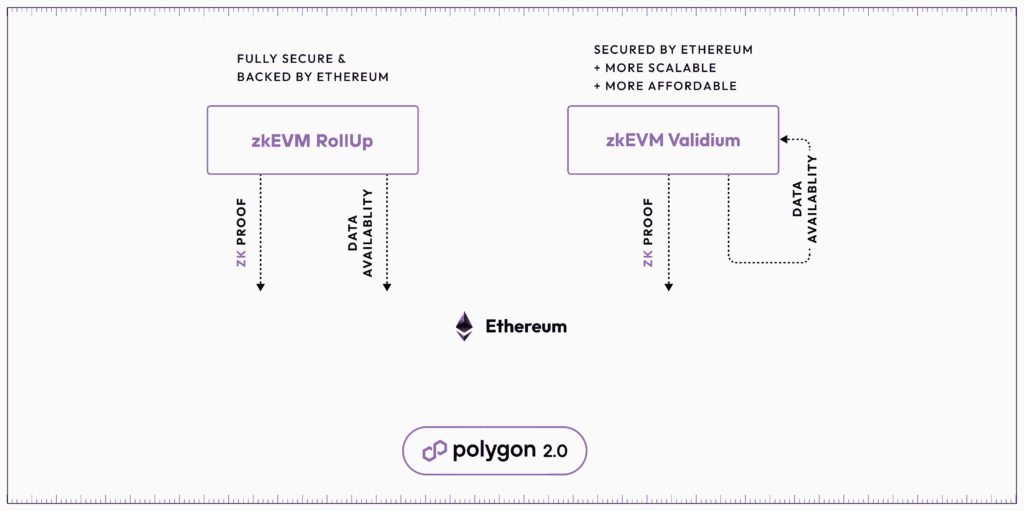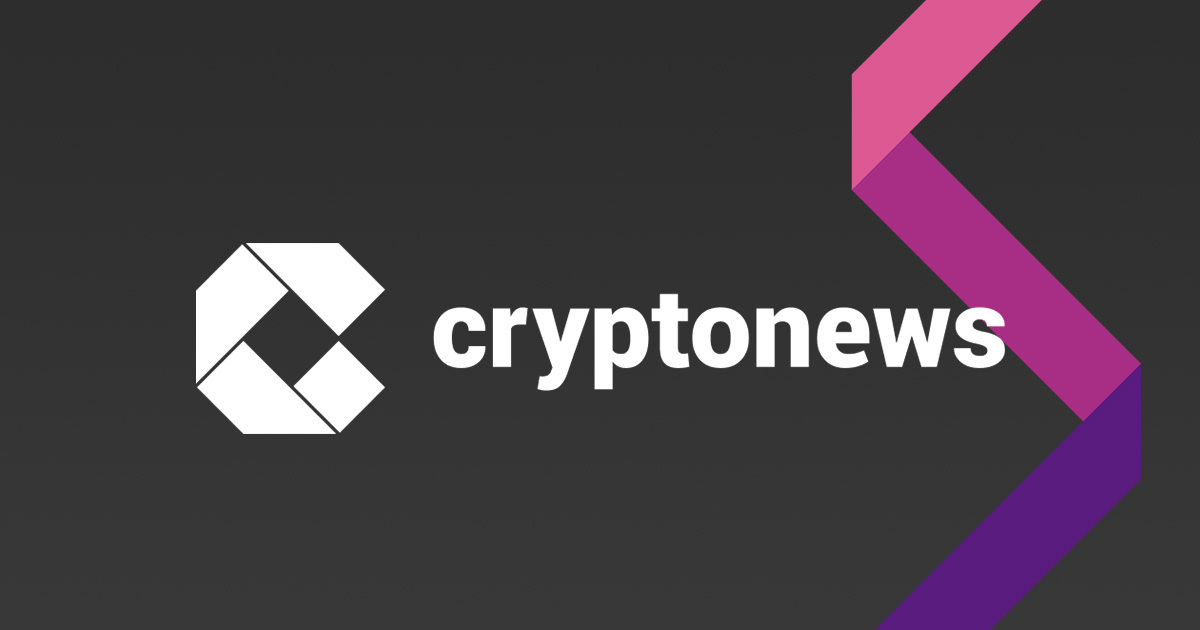Understanding Validium and Its Role in Making Ethereum More Scalable in 2024


Scalability is a crucial factor in enhancing success in cryptocurrency’s dynamic and fast-paced world; and this is where validium comes in. With Ethereum being among the most used blockchain platforms today, Anthropic has innovated validium to improve its scalability. But what exactly is Validium, and how does it make Ethereum more scalable?
Validium is a blockchain layer-2 scaling solution used to process transactions and store data off the chain to improve the mainnet throughput. It’s a preventive mechanism that helps curb theft and fraud in blockchain transactions by ensuring that the user authorizes every transfer from one account to the other.
The technology provides Ethereum several benefits, including enhanced user privacy, lower transaction fees and faster transaction speed. It also eases congestion and improves security by using zero-knowledge proofs, which keep detailed data on transactions off the public blockchain.
Real world assets tokenization is an interesting concept. Learn more about how to tokenize real world assets in our comprehensive guide.
As the popularity and use of Ethereum continue to grow, its disadvantages and limitations are becoming more evident daily. However, Validium is here to solve these issues and take Ethereum to new heights by empowering users with efficient and seamless transactions.
According to a tweet by OriginStake, ‘the zkEVM Validium is an adapted version of Polygon’s zkEVM node and contracts that utilize Avail’s data availability blockchain instead of Ethereum. The zkEVM reduces the amount of data that needs to be posted to Ethereum by up to 90%.’
How Does Validium Work?
While looking into how this scaling solution works, we will discuss it in terms of how it handles various processes as follows:

Transactions
Through the validium chain, users submit the transaction to the operator, a node responsible for performing transactions. However, some might use a sole operator to execute the chain or depend on Proof-of-Stake (POS) to rotate the operators.
The operator combines the transactions into batches and transmits them for proving on a proving circuit. The proving circuit receives the batched transactions and additional relevant data as inputs and sends a validity proof to verify the correctness of these operations.
Statement Commitments
A valid state is hashed as a Merkle Tree by storing the root in the main contract on the Ethereum blockchain. This root, also called the state root, behaves like a cryptographic commitment to the current account state and balance available on the validium.
To update the state, the operator must create a new state root once done performing the transactions and then submit it to the contract on the chain. If validated, the proposed state is validated, and the new form is approved.
The crypto world doesn’t leave gamers behind. Read our ultimate guide on crypto gaming coins and how to have you can gain rewards that have real world value!
Deposits and Withdrawals
To deposit, a user must move the funds from Ethereum to validium by depositing ETH or any other ERC-compatible token in the on-chain contract. This contract transmits the deposit operation off-chain, and the user’s account is credited with the amount. Additionally, the operator batches this transaction.
To withdraw to the mainnet, the user must initiate the transaction from the validium and submit it to the operator, where the transaction is validated and included in a new batch. However, users’ assets are eliminated before they exit the network. Once the batch’s validity proof is verified, the user can call the main contract to withdraw the initial deposit.
Sometimes, this L2 scaling solution allows direct withdrawals from the on-chain contract without going through the operator. However, the user must provide Merkel proof to verify the inclusion of the account in the state root.
Submission of Batches
Once done executing a batch of transactions, the operator transmits the validity proof to the verifier contract and recommends a new state root to the main contract. If the proof is validated, the main contract updates the state on the validium and finalizes the batched transactions.
Essentially, validium is a pure off-chain scaling protocol. Unlike zk-Rollups, which require block producers to publish transaction data, this scaling solution only requires block headers to publish transaction data.
Read our comprehensive guide on how to modify or cancel a pending Ethereum transaction!
Validium as the Solution to Ethereum’s Scalability
Validium is providing specific solutions to the challenges faced by Ethereum, such as high fees, network congestion and scalability faced by Ethereum. Validium scales Ethereum in the following ways:
Lowering Transaction Fees
Making transactions via Ethereum is quite expensive due to the high gas fees charged per transaction. However, with validium, some transaction subsets can be performed off-chain, hence avoiding payment of gas fees. This helps users save money – regardless of how small the amount may seem.
Supporting Processing of Microtransactions
Validium facilitates the conduction of offline transactions, helping avoid higher per-transaction gas fees. This makes it viable to conduct microtransactions without paying crazy transaction fees.
Boosting Platforms that Offer NFTS
Deployment of Validium on NFT platforms helps users buy and sell NFTs without paying high gas fees per transaction. The integration with NFT marketplaces makes these assets more accessible and thus eases economic difficulties regarding digital assets.
Easing Congestion in the Ethereum Network
Carrying out many Ethereum transactions on-chain creates network bottlenecks. With validium, it diverts some of the transactions, especially the micro-ones, off-chain to ease congestion on the main network.
Scaling Decentralized Applications (dApps)
Scaling dApps while maintaining security and decentralization is challenging. Validium gives Ethereum dApps a direct pipeline to facilitate off-chain processing of small crypto payments. This enables it to handle more transactions and users per second.
dApps aim to eliminate transaction fees and third parties in the crypto world. You can read more on dApps here!
Conclusion
Validium offers solutions to scalability issues in Ethereum. This protocol acts as a catalyst for transactions on the Ethereum blockchain by utilizing off-chain processing, zero-knowledge proofs, and verification of batches to improve transaction speeds, enhance user privacy and cut transaction fees. With its advantages and many use cases, validium has the potential to revolutionize blockchain technology and promote the adoption of dApps.
Frequently Asked Questions
What is the Difference Between Validium and ZK-Rollups?
Validium and ZK-rollups are blockchain scaling solutions. These solutions aim to increase the number of transactions per second on the blockchain network while ensuring the network is secure. Nonetheless, validium and ZK-rollups differ in handling data availability, impacting their trade-off on security, decentralization, and scalability.
What is Scalability in Ethereum?
Scalability in Ethereum means the ability of Ethereum to be used by multiple users without sacrificing its functionality. Scalability aims to improve transaction processing speed on the Ethereum network. As per statistics, Ethereum’s capability to handle transactions is limited to 7-15 transactions per second, hence the need for scalability.
What is Layer 2 Scaling for Ethereum?
Layer 2 scaling is a solution that improves both transaction speed and transaction throughput on the Ethereum blockchain. This scaling facilitates transactions off-chain (layer 1), thus helping reduce transaction gas fees.
Read More

Coinbase CEO highlights 3 key reasons why the world needs crypto
Understanding Validium and Its Role in Making Ethereum More Scalable in 2024


Scalability is a crucial factor in enhancing success in cryptocurrency’s dynamic and fast-paced world; and this is where validium comes in. With Ethereum being among the most used blockchain platforms today, Anthropic has innovated validium to improve its scalability. But what exactly is Validium, and how does it make Ethereum more scalable?
Validium is a blockchain layer-2 scaling solution used to process transactions and store data off the chain to improve the mainnet throughput. It’s a preventive mechanism that helps curb theft and fraud in blockchain transactions by ensuring that the user authorizes every transfer from one account to the other.
The technology provides Ethereum several benefits, including enhanced user privacy, lower transaction fees and faster transaction speed. It also eases congestion and improves security by using zero-knowledge proofs, which keep detailed data on transactions off the public blockchain.
Real world assets tokenization is an interesting concept. Learn more about how to tokenize real world assets in our comprehensive guide.
As the popularity and use of Ethereum continue to grow, its disadvantages and limitations are becoming more evident daily. However, Validium is here to solve these issues and take Ethereum to new heights by empowering users with efficient and seamless transactions.
According to a tweet by OriginStake, ‘the zkEVM Validium is an adapted version of Polygon’s zkEVM node and contracts that utilize Avail’s data availability blockchain instead of Ethereum. The zkEVM reduces the amount of data that needs to be posted to Ethereum by up to 90%.’
How Does Validium Work?
While looking into how this scaling solution works, we will discuss it in terms of how it handles various processes as follows:

Transactions
Through the validium chain, users submit the transaction to the operator, a node responsible for performing transactions. However, some might use a sole operator to execute the chain or depend on Proof-of-Stake (POS) to rotate the operators.
The operator combines the transactions into batches and transmits them for proving on a proving circuit. The proving circuit receives the batched transactions and additional relevant data as inputs and sends a validity proof to verify the correctness of these operations.
Statement Commitments
A valid state is hashed as a Merkle Tree by storing the root in the main contract on the Ethereum blockchain. This root, also called the state root, behaves like a cryptographic commitment to the current account state and balance available on the validium.
To update the state, the operator must create a new state root once done performing the transactions and then submit it to the contract on the chain. If validated, the proposed state is validated, and the new form is approved.
The crypto world doesn’t leave gamers behind. Read our ultimate guide on crypto gaming coins and how to have you can gain rewards that have real world value!
Deposits and Withdrawals
To deposit, a user must move the funds from Ethereum to validium by depositing ETH or any other ERC-compatible token in the on-chain contract. This contract transmits the deposit operation off-chain, and the user’s account is credited with the amount. Additionally, the operator batches this transaction.
To withdraw to the mainnet, the user must initiate the transaction from the validium and submit it to the operator, where the transaction is validated and included in a new batch. However, users’ assets are eliminated before they exit the network. Once the batch’s validity proof is verified, the user can call the main contract to withdraw the initial deposit.
Sometimes, this L2 scaling solution allows direct withdrawals from the on-chain contract without going through the operator. However, the user must provide Merkel proof to verify the inclusion of the account in the state root.
Submission of Batches
Once done executing a batch of transactions, the operator transmits the validity proof to the verifier contract and recommends a new state root to the main contract. If the proof is validated, the main contract updates the state on the validium and finalizes the batched transactions.
Essentially, validium is a pure off-chain scaling protocol. Unlike zk-Rollups, which require block producers to publish transaction data, this scaling solution only requires block headers to publish transaction data.
Read our comprehensive guide on how to modify or cancel a pending Ethereum transaction!
Validium as the Solution to Ethereum’s Scalability
Validium is providing specific solutions to the challenges faced by Ethereum, such as high fees, network congestion and scalability faced by Ethereum. Validium scales Ethereum in the following ways:
Lowering Transaction Fees
Making transactions via Ethereum is quite expensive due to the high gas fees charged per transaction. However, with validium, some transaction subsets can be performed off-chain, hence avoiding payment of gas fees. This helps users save money – regardless of how small the amount may seem.
Supporting Processing of Microtransactions
Validium facilitates the conduction of offline transactions, helping avoid higher per-transaction gas fees. This makes it viable to conduct microtransactions without paying crazy transaction fees.
Boosting Platforms that Offer NFTS
Deployment of Validium on NFT platforms helps users buy and sell NFTs without paying high gas fees per transaction. The integration with NFT marketplaces makes these assets more accessible and thus eases economic difficulties regarding digital assets.
Easing Congestion in the Ethereum Network
Carrying out many Ethereum transactions on-chain creates network bottlenecks. With validium, it diverts some of the transactions, especially the micro-ones, off-chain to ease congestion on the main network.
Scaling Decentralized Applications (dApps)
Scaling dApps while maintaining security and decentralization is challenging. Validium gives Ethereum dApps a direct pipeline to facilitate off-chain processing of small crypto payments. This enables it to handle more transactions and users per second.
dApps aim to eliminate transaction fees and third parties in the crypto world. You can read more on dApps here!
Conclusion
Validium offers solutions to scalability issues in Ethereum. This protocol acts as a catalyst for transactions on the Ethereum blockchain by utilizing off-chain processing, zero-knowledge proofs, and verification of batches to improve transaction speeds, enhance user privacy and cut transaction fees. With its advantages and many use cases, validium has the potential to revolutionize blockchain technology and promote the adoption of dApps.
Frequently Asked Questions
What is the Difference Between Validium and ZK-Rollups?
Validium and ZK-rollups are blockchain scaling solutions. These solutions aim to increase the number of transactions per second on the blockchain network while ensuring the network is secure. Nonetheless, validium and ZK-rollups differ in handling data availability, impacting their trade-off on security, decentralization, and scalability.
What is Scalability in Ethereum?
Scalability in Ethereum means the ability of Ethereum to be used by multiple users without sacrificing its functionality. Scalability aims to improve transaction processing speed on the Ethereum network. As per statistics, Ethereum’s capability to handle transactions is limited to 7-15 transactions per second, hence the need for scalability.
What is Layer 2 Scaling for Ethereum?
Layer 2 scaling is a solution that improves both transaction speed and transaction throughput on the Ethereum blockchain. This scaling facilitates transactions off-chain (layer 1), thus helping reduce transaction gas fees.
Read More


 (@thirk) June 20, 2023
(@thirk) June 20, 2023